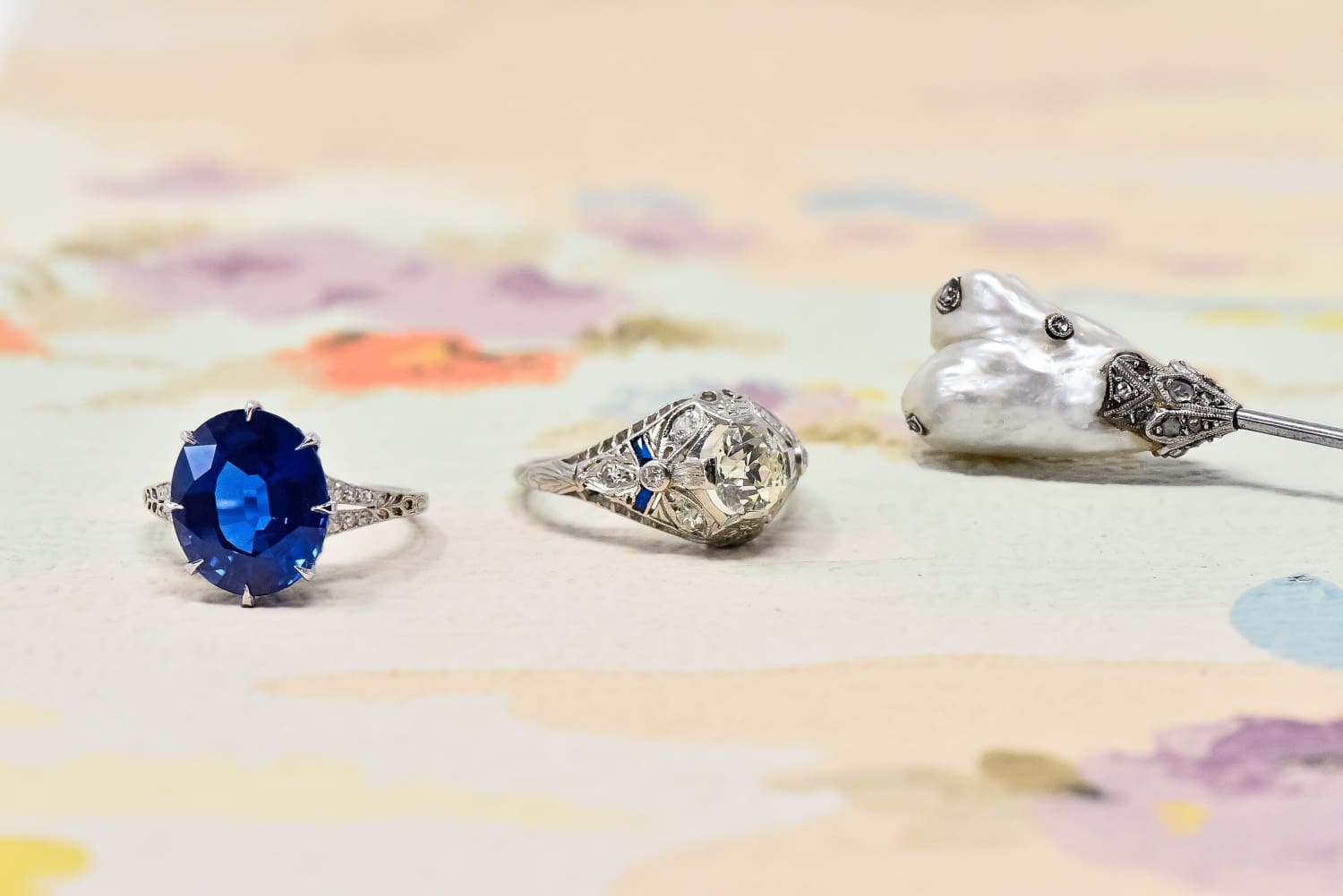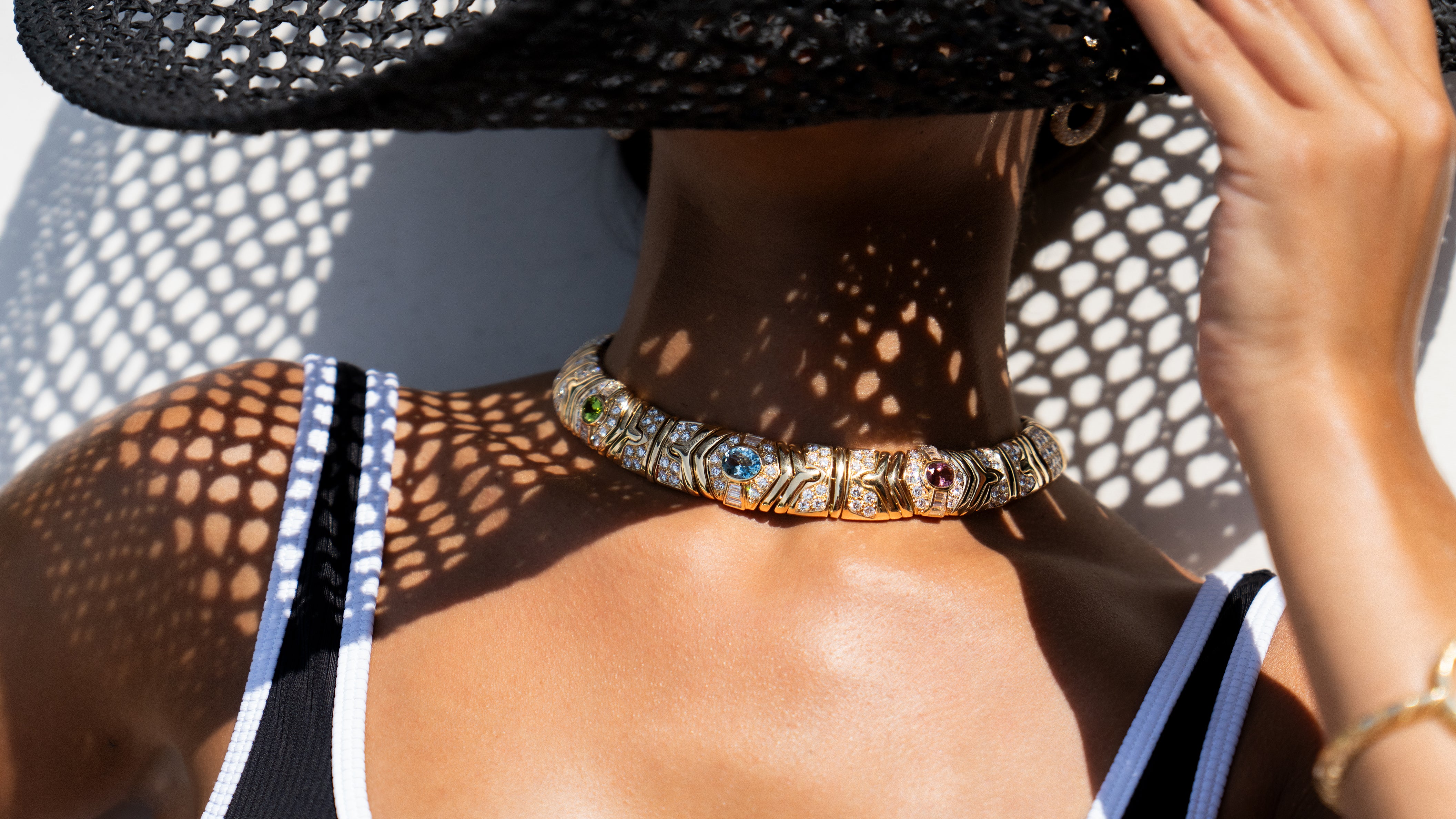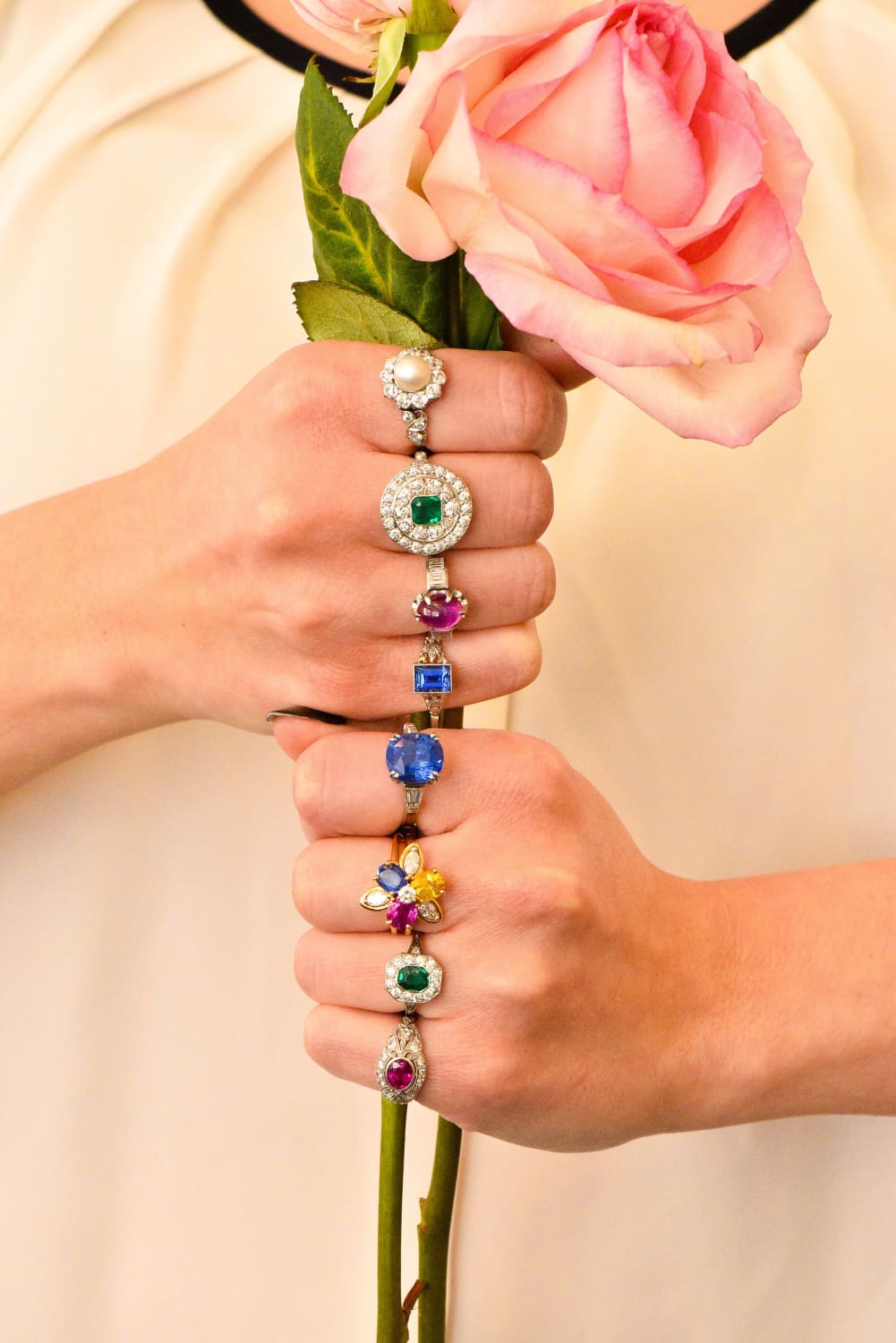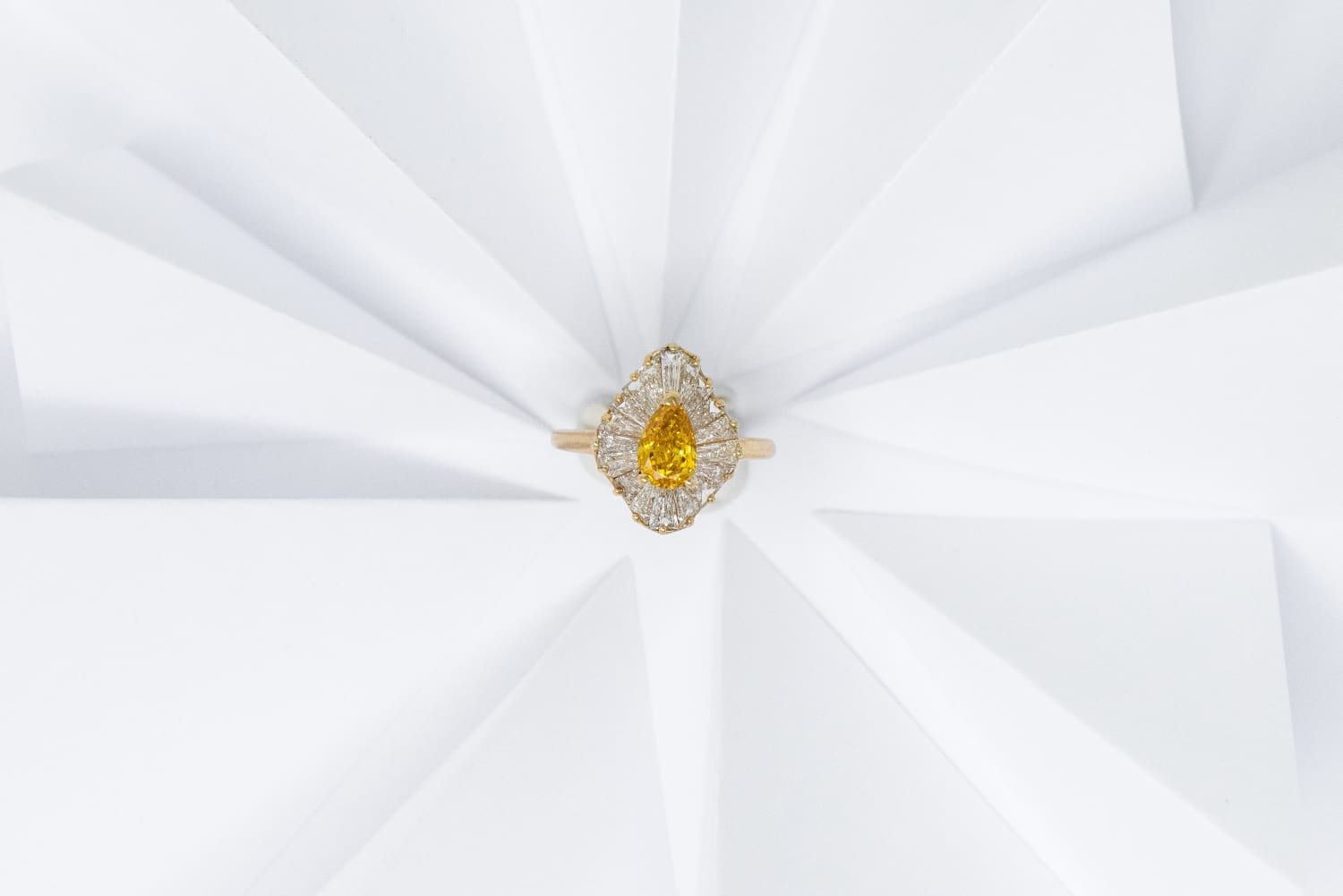
The Age of Belle Époque
On the cusp of the twentieth century, there was a design-boom featuring romanticized opulent ornamentation. It was a time of fleeting peace between wars when humanity came together to celebrate nature and invoked it in art. This period is known as Belle Époque which is French in origin to mean beautiful era.
During this time industry and technology progressed tremendously, making things that were for the wealthy elite more accessible to everyone. A surge of knowledge and prosperity trickled down to create a middle class that enjoyed the decadence of new inventions.
Clothing styles changed to be less practical and more fashionable. These new delicate pastel colored fabrics needed lighter more whimsical jewelry to adorn them. Platinum was introduced and articulated into delicate latticework to replace the heavier silver used during the Victorian era.

In this new age, Belle Époque allowed for schools of thought to come forward that designed for philosophy utilizing motifs like bows, florals, fauna, and celestial bodies. Innovations were sinuous and overtly sumptuous. Enameling had spread to Europe and was used in jewelry to exhibit an ethereal fantasy. Popular gemstones of the time were pearls, moonstones, and opals. All of which showcased dreamy phenomena that represented the fairytale motivations of the period's fashion.
This movement lasted from 1871 until about 1914 when the outbreak of World War I brought Europe's harmonizing to an end. Resources needed to be used for war and not for superfluous objects of beauty. Jewelry pieces from this period are valuable to collect since they resiliently survived wars and are reminders of a time of hope. Social tensions did run very high for the duration of Belle Époque, but the discomfort brought about many necessary social changes, especially for women.
Here a baroque pearl celebrates its natural state of beauty and its imperfections.
And a Belle Époque mount featuring filigree and a tantalizing old European cut center.
This royal blue sapphire ring is the essence of elegance with it's highly decorated mount.



Leave a comment
This site is protected by hCaptcha and the hCaptcha Privacy Policy and Terms of Service apply.